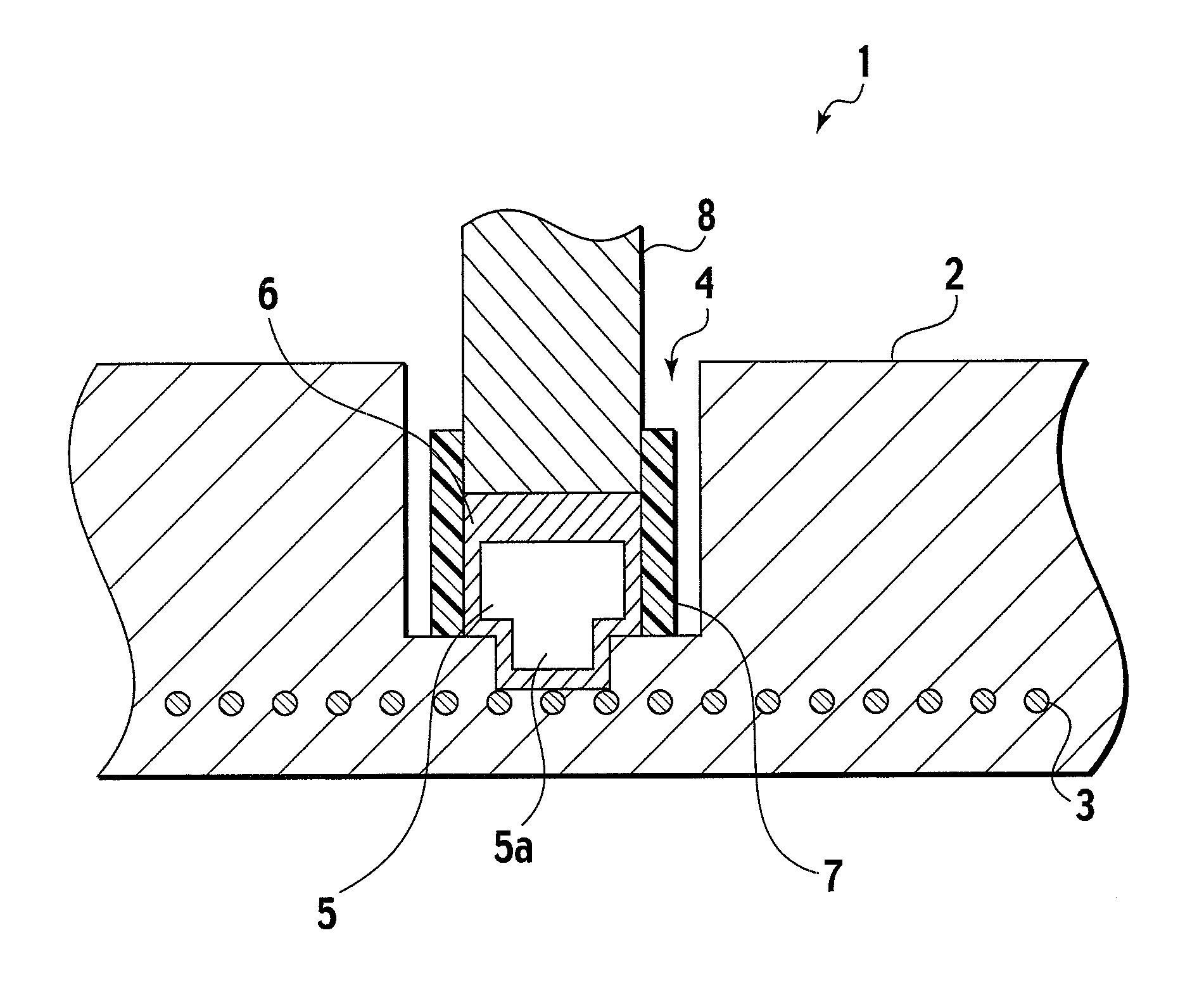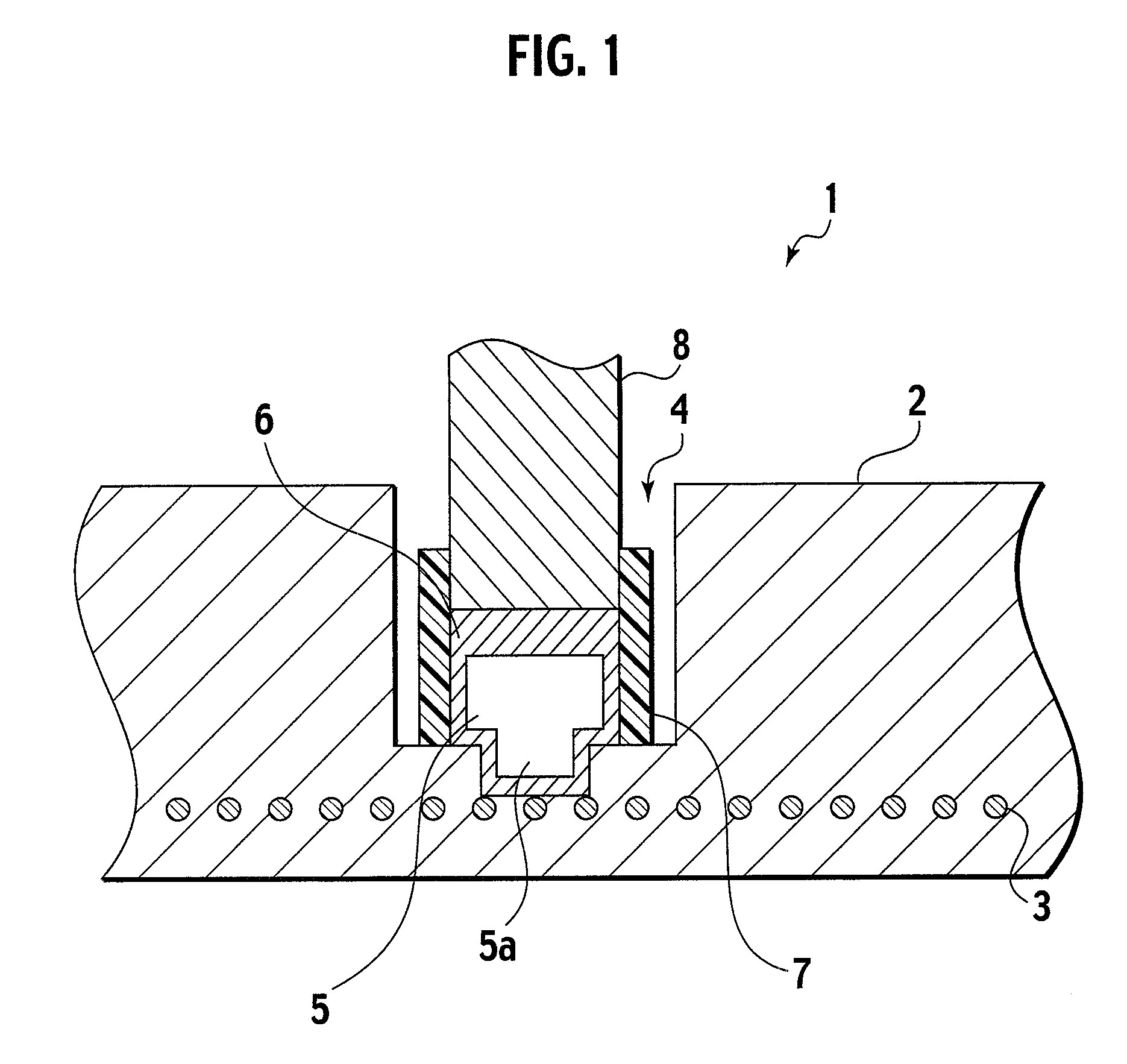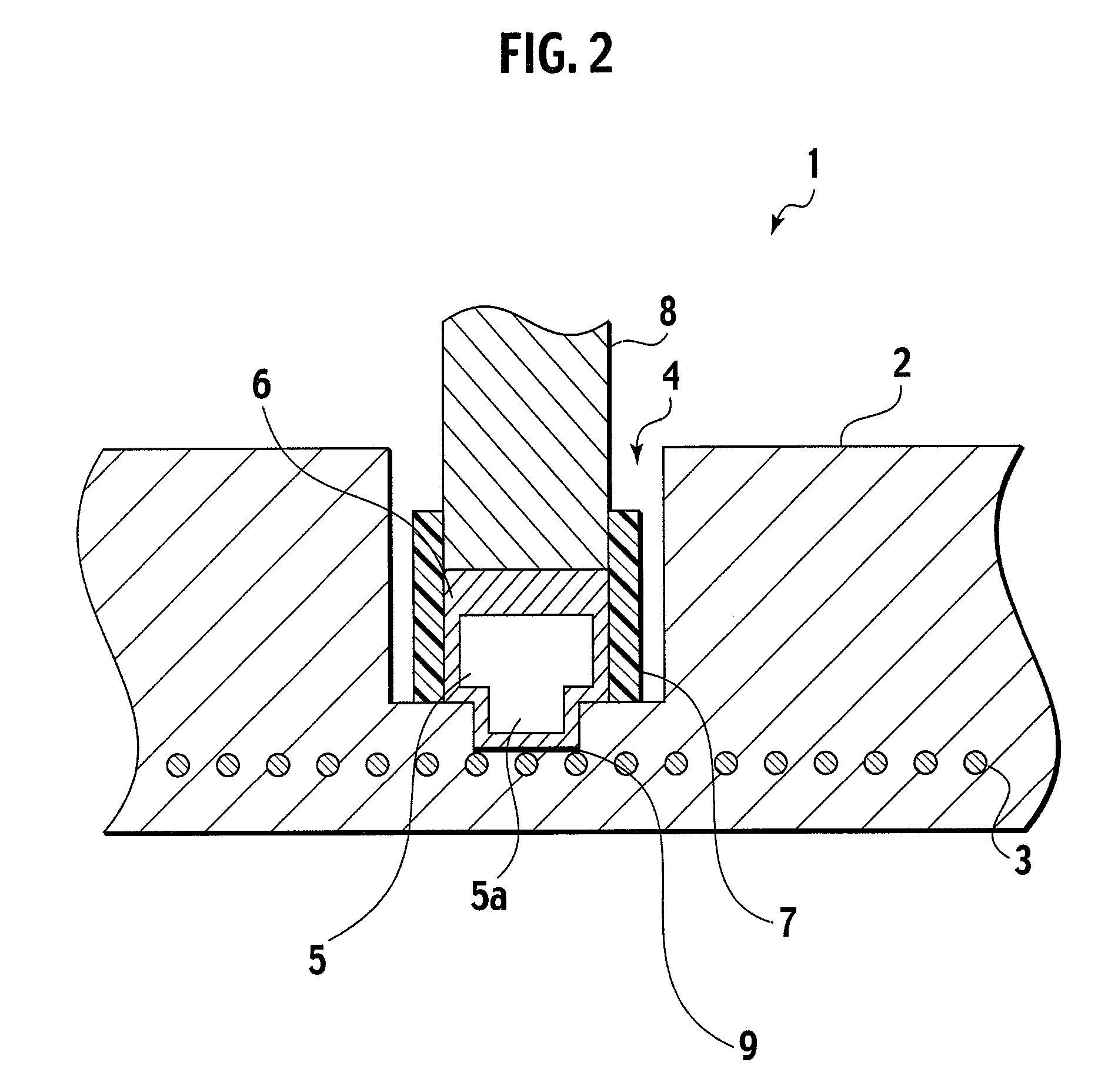Joining structure between ceramic substrate and power supply connector
- Summary
- Abstract
- Description
- Claims
- Application Information
AI Technical Summary
Benefits of technology
Problems solved by technology
Method used
Image
Examples
examples
[0025] Hereinafter, description will be given of some examples of the high-frequency generation electrode device 1 manufactured by use of the manufacturing method described above.
[0026] The FIG. 5 shows results obtained by respectively performing conduction cycle tests on high-frequency generation electrode devices provided with stress relaxation insert members having dimensions of examples 1 to 6, high-frequency generation electrode devices provided with stress relaxation insert members having dimensions of comparative examples 1 to 4, and a conventional high-frequency generation electrode device (without a stress relaxation insert member). Specifically, in the conduction cycle test, a cycle of heating the device from 100 [° C.] to 700 [° C.] at a heating rate of 10 [° C. / min] and, thereafter, cooling the device from 700 [° C.] to 100 [° C.] at an average cooling rate of 7 [° C. / min] in a state where power is being distributed to a RF electrodes is repeated. Note that, in this tes...
PUM
 Login to View More
Login to View More Abstract
Description
Claims
Application Information
 Login to View More
Login to View More - R&D
- Intellectual Property
- Life Sciences
- Materials
- Tech Scout
- Unparalleled Data Quality
- Higher Quality Content
- 60% Fewer Hallucinations
Browse by: Latest US Patents, China's latest patents, Technical Efficacy Thesaurus, Application Domain, Technology Topic, Popular Technical Reports.
© 2025 PatSnap. All rights reserved.Legal|Privacy policy|Modern Slavery Act Transparency Statement|Sitemap|About US| Contact US: help@patsnap.com



